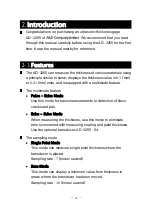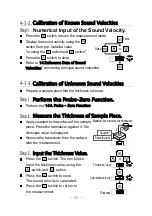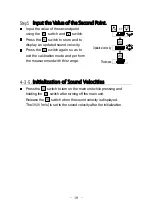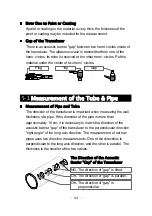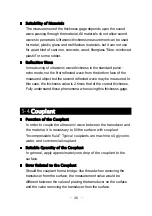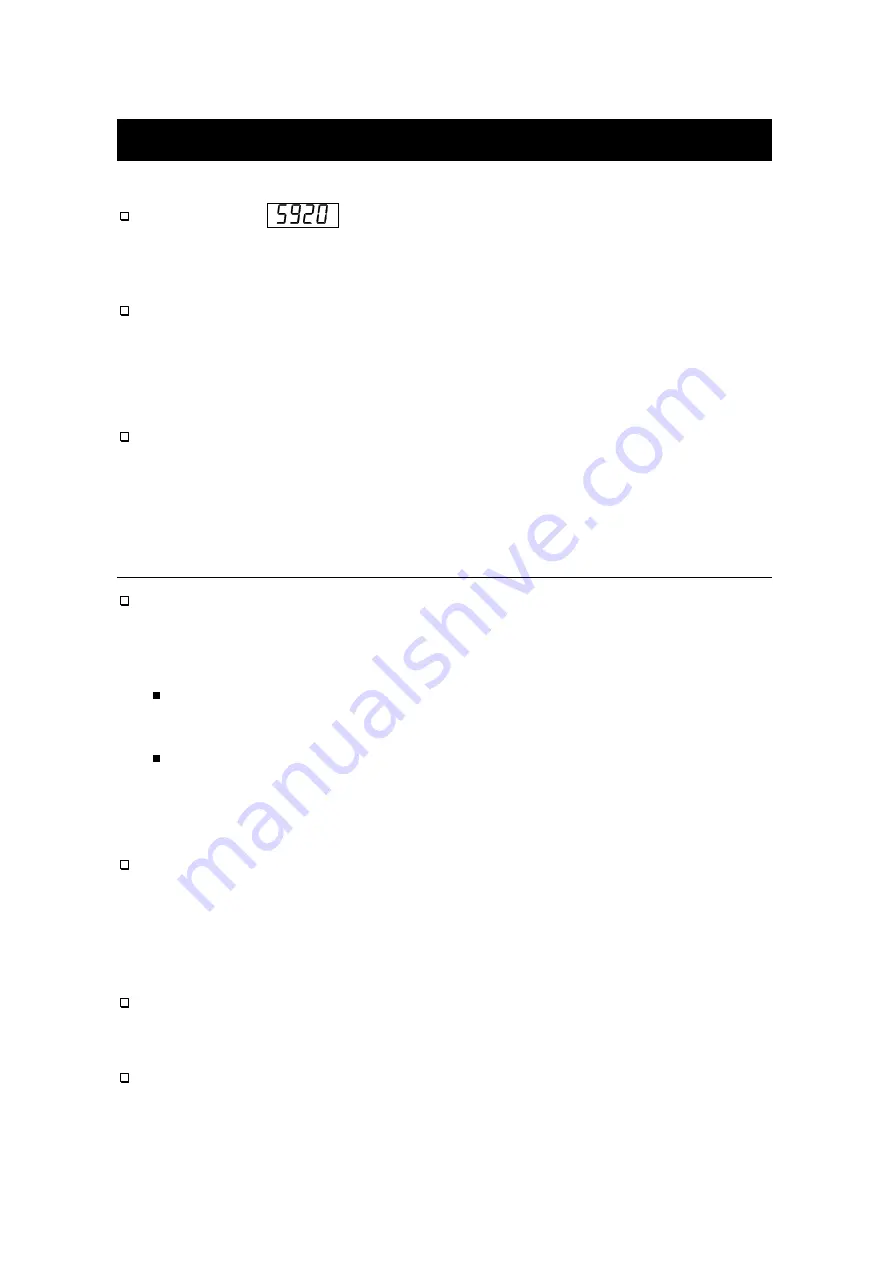
-
16
-
4-3. Sound Velocity Calibration
Cautions
Confirm
the
[
m/s
]
to the sound velocity when calibrating
the sound velocity using the accessory test piece. The settings are
not needed if the sound velocity has not changed.
Sample piece whose coating or paint has removed is required for
both the single point and the two point calibrations. If the sample
piece's coating or paint is not removed, a correct thickness value
can not be displayed.
In order to keep the accuracy of the measurement, use sample
pieces of known thickness.
4-3-1. Use of Sound Velocity Calibration
"
The single point calibration
" is the simplest and is commonly
used as the calibration procedure that can optimize the linearity in
a wide range.
The method to input the sound velocity using numerical switches.
Refer to "
4-3-2. Calibration of Known Sound Velocities
".
The method to calculate the sound velocity based on known
thickness of sample piece.
Refer to "
4-3-3. Calibration of Unknown Sound Velocities
".
"
The two point calibration
" allows for greater accuracy over a small
range by calculating the probe
-
zero function and sound velocity
calibration.
Refer to "
4-3-4. Two point calibration for Sound Velocities
".
The method to restore to the sound velocity of the test piece.
Refer to "
4-3-5. Initialization of Sound Velocities
".
The method select a sound velocity from pre
-
installed values.
Refer to "
4-3-6. Pre-installed Sound Velocities
".



